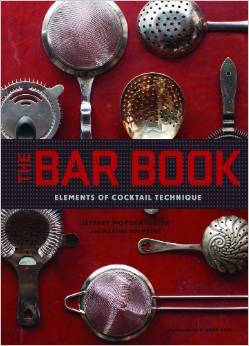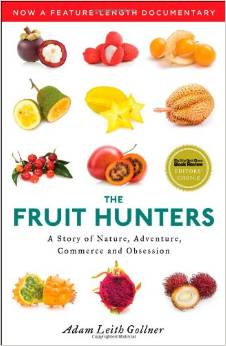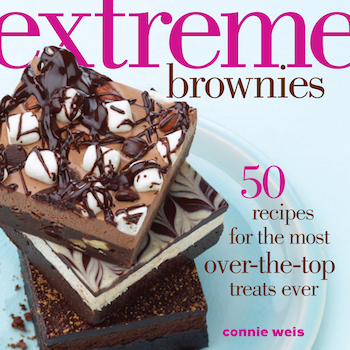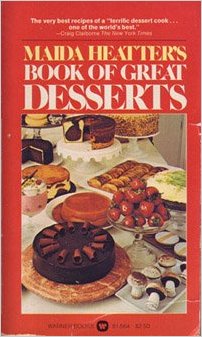Special Feature: Products Sally Recommends
gift books for Foodies
You need a gift for a foodie friend or relative. Sure, you can get them a huge coffee table book with glorious photos of some travel writer's trip to Tuscany, but I like books with useful information. I want to be able to learn something when I read, or at least I like an author to bring up a topic I've never considered before. If you're the same way, here's a list of some of what's been on my nightstand over the past year, in no particular order.
 ---The Bar Book: Elements of Cocktail Technique, by Jeffrey Morgenthaler (Chronicle Books, 2014). I first encountered this book on a lengthy road trip with two old friends. While R drove, W read various passages from the book, which dealt with every conceivable aspect of cocktail-making, from how to get perfectly clear ice for one's cocktails (hint: it involves several friends and a chainsaw) to selecting the right sugar for your simple syrup. It becomes apparent very quickly that The Bar Book is the work of someone obsessive, which to my way of thinking is a requirement for penning a good book about food or beverages. I was so intrigued that I bought the book when I came home, which is a notable achievement for the author as I can't drink alcohol. Craft cocktails are very “in” right now, and you'll find recipes, equipment selection (including recommendations on what not to purchase), and all kinds of techniques from this former-architect-turned-bartender. If you've ever thought about getting your cocktail geek on, this book is for you. Gorgeous photos, too.
---The Bar Book: Elements of Cocktail Technique, by Jeffrey Morgenthaler (Chronicle Books, 2014). I first encountered this book on a lengthy road trip with two old friends. While R drove, W read various passages from the book, which dealt with every conceivable aspect of cocktail-making, from how to get perfectly clear ice for one's cocktails (hint: it involves several friends and a chainsaw) to selecting the right sugar for your simple syrup. It becomes apparent very quickly that The Bar Book is the work of someone obsessive, which to my way of thinking is a requirement for penning a good book about food or beverages. I was so intrigued that I bought the book when I came home, which is a notable achievement for the author as I can't drink alcohol. Craft cocktails are very “in” right now, and you'll find recipes, equipment selection (including recommendations on what not to purchase), and all kinds of techniques from this former-architect-turned-bartender. If you've ever thought about getting your cocktail geek on, this book is for you. Gorgeous photos, too.
---We Make Beer: Inside the Spirit and Artistry of America's Craft Brewers, by Sean Lewis (St. Martin's Press, 2014). It's just speculation, but my guess is that there are many, many people who would like to have Sean Lewis' jobs. He writes about sports and beer, you see. I've never read anything from him regarding sports, but We Make Beer is great fun to read. A number of craft beer breweries are highlighted in the book, and you really get a feel for the differing viewpoints on beer held by those who actually make it. There are breweries and gastropubs where you would expect them (California, Massachusetts, Pennsylvania) and where you wouldn't (Nebraska). These brewers don't work for huge corporations with immense marketing budgets and focus groups; they're people devoted to a truly ancient beverage that deserves more respect than it received from most American manufacturers for generations. Best of all, We Make Beer provides a look into the genuine sense of community among small-scale brewers. Sure, they're competitors, but they'll also help one another as occasion offers. If you've ever thought about starting your own microbrewery or just want to discover more about dedication to producing fine beer, pick up a copy.
---Pepper: A History of the World's Most Influential Spice, by Marjorie Shaffer (Thomas Dunne Books, 2013). The pepper found on every restaurant table in the US, the spice you and I take for granted, was once considered a legitimate form of currency. When Isabella married the Holy Roman Emperor Charles V in 1526, her brother, John III of Portugal, paid part of her dowry in pepper. Sailors who survived lengthy spice-seeking voyages to Asia were occasionally paid in pepper and other spices, a salary valuable enough to set some up for the rest of their lives. Pepper has a lengthy, astonishing, and often terrible history, and Ms. Shaffer dives headfirst into it. From the extensive Roman use of pepper to the Dutch and English competition to control port cities in Asia, she details colorful personalities, the effects of the European voyagers on wildlife, and oppression of indigenous peoples. There's also a chapter on potential medicinal uses of pepper; it turns out that pepper and its relatives are being examined for possible roles in fighting inflammation, microbes, cancer, and even insects.
 ---The Fruit Hunters: A Story of Nature, Adventure, Commerce, and Obsession, by Adam Leith Gollner (Scribner, 2008). Have you ever tasted a chempedak? Do you know where to find the best white strawberries? Is the Milky Way yamaboshi on your shopping list for the week? Adam Leith Gollner tells us that thousands of spectacular fruits eaten all over the world never make it to Europe or the US. In the pages of this book, you'll encounter charlatans and smugglers, plant thieves and preservationists, fanatic cultivators of exotic fruits, and an absolutely disgraceful episode in the history of the FDA regarding miraculin, a glycoprotein that temporarily overrides any sour taste in your mouth. You'll meet the elusive Fruit Detective, members of NAFEX (the North American Fruit Explorers), and the man responsible for the Grapple, an apple flavored so that it supposedly tastes like a grape. The author travels to, among other places, Borneo and Bangkok, to see and taste storied fruits not usually available in developed countries. This is a most intriguing read about the political, economic, botanical, and occasionally ethical complications in the world of fruit.
---The Fruit Hunters: A Story of Nature, Adventure, Commerce, and Obsession, by Adam Leith Gollner (Scribner, 2008). Have you ever tasted a chempedak? Do you know where to find the best white strawberries? Is the Milky Way yamaboshi on your shopping list for the week? Adam Leith Gollner tells us that thousands of spectacular fruits eaten all over the world never make it to Europe or the US. In the pages of this book, you'll encounter charlatans and smugglers, plant thieves and preservationists, fanatic cultivators of exotic fruits, and an absolutely disgraceful episode in the history of the FDA regarding miraculin, a glycoprotein that temporarily overrides any sour taste in your mouth. You'll meet the elusive Fruit Detective, members of NAFEX (the North American Fruit Explorers), and the man responsible for the Grapple, an apple flavored so that it supposedly tastes like a grape. The author travels to, among other places, Borneo and Bangkok, to see and taste storied fruits not usually available in developed countries. This is a most intriguing read about the political, economic, botanical, and occasionally ethical complications in the world of fruit.
---The Language of Food: A Linguist Reads the Menu, by Dan Jurafsky (W.W. Norton & Company, 2014). In addition to being a foodie, I am fascinated by words---their origins, how their meanings can change over time, and how they're used to sway people. If you have similar inclinations, you'll love this book. Dan Jurafsky explores, among other subjects, the origins of ketchup (the word as well as the condiment), manufacturers' descriptions of expensive potato chip brands in comparison with the way inexpensive brands are labeled, and how dessert and sushi are the two kinds of food most frequently associated with sex (if you want examples of the latter, you need only read online reviews). It is obvious that a great deal of research (some of which would never even have occurred to me to do) went into this book, but Mr. Jurafsky understands that most of his readers aren't linguists, and he keeps the subject matter approachable and entertaining.
 ---Extreme Brownies: 50 Recipes For the Most Over-The-Top Treats Ever, by Connie Weis (Andrews McMeel Publishing, LLC, 2014). I have a terrible case of Brownie Envy, thanks to several forays into Connie Weis' book of extravagant, calorie-laden uberbrownies. I've been working on my own brownie recipe for twenty years now and thought I had something pretty good, but that was a mistake. I've made several recipes from this book, and I am here to tell you that you'll have to go a long way indeed to find anything the equal of her Peanut Buttercream Brownies or Mega Mallow Coconut Brownies. These are not recipes for last-minute occasions; most involve multiple layers that require separate preparation, and everything requires lengthy chilling prior to cutting. But if you're willing to take the time to follow instructions, you'll be amply rewarded. I don't care for the brands of chocolate Ms. Weis recommends but have substituted others (of similar cacao percentages) with excellent results. Perhaps most impressively, the recipes that I tried actually worked, a big deal in an age when it's all some publishers will do to proofread, let alone test recipes. To my amazement, Ms. Weis was correct even when she insisted it was possible to freeze brownies with a layer of homemade marshmallow on top (I'd always heard that unflavored gelatin, a basic component of homemade marshmallow, does not freeze, but I froze some of the brownies in question for two weeks and they emerged from the freezer in flawless condition). If you're looking for drool-worthy photos, you'll find those here, as well.
---Extreme Brownies: 50 Recipes For the Most Over-The-Top Treats Ever, by Connie Weis (Andrews McMeel Publishing, LLC, 2014). I have a terrible case of Brownie Envy, thanks to several forays into Connie Weis' book of extravagant, calorie-laden uberbrownies. I've been working on my own brownie recipe for twenty years now and thought I had something pretty good, but that was a mistake. I've made several recipes from this book, and I am here to tell you that you'll have to go a long way indeed to find anything the equal of her Peanut Buttercream Brownies or Mega Mallow Coconut Brownies. These are not recipes for last-minute occasions; most involve multiple layers that require separate preparation, and everything requires lengthy chilling prior to cutting. But if you're willing to take the time to follow instructions, you'll be amply rewarded. I don't care for the brands of chocolate Ms. Weis recommends but have substituted others (of similar cacao percentages) with excellent results. Perhaps most impressively, the recipes that I tried actually worked, a big deal in an age when it's all some publishers will do to proofread, let alone test recipes. To my amazement, Ms. Weis was correct even when she insisted it was possible to freeze brownies with a layer of homemade marshmallow on top (I'd always heard that unflavored gelatin, a basic component of homemade marshmallow, does not freeze, but I froze some of the brownies in question for two weeks and they emerged from the freezer in flawless condition). If you're looking for drool-worthy photos, you'll find those here, as well.
To round off the list, I'm including two “oldies but goodies”. These books may be difficult to find, but they are worth it; both have been go-to books for me for decades.
 ---Maida Heatter's Book of Great Desserts, by Maida Heatter (Alfred A. Knopf, 1977). I received this book as a birthday gift, and it opened up an entire new world of baking for me. Up until that time, I'd been baking mostly from cookbooks geared toward kids or teens. My Mom had cookbooks more geared toward adults, it's true, but most of the dessert recipes in those books were impractical or seemed too far beyond my reach. Ms. Heatter changed all that. Her instructions are clear and detailed; she provides notes on ingredients and techniques; her recipes are creative and motivated me to try more and more of them. This book contains chapters on everything from pound cakes to cookie-jar cookies to individual pastries and petits fours. Some of Ms. Heatter's subsequent books are just as good (her books on chocolate desserts and American desserts, in particular), but this was the volume that started it all for me.
---Maida Heatter's Book of Great Desserts, by Maida Heatter (Alfred A. Knopf, 1977). I received this book as a birthday gift, and it opened up an entire new world of baking for me. Up until that time, I'd been baking mostly from cookbooks geared toward kids or teens. My Mom had cookbooks more geared toward adults, it's true, but most of the dessert recipes in those books were impractical or seemed too far beyond my reach. Ms. Heatter changed all that. Her instructions are clear and detailed; she provides notes on ingredients and techniques; her recipes are creative and motivated me to try more and more of them. This book contains chapters on everything from pound cakes to cookie-jar cookies to individual pastries and petits fours. Some of Ms. Heatter's subsequent books are just as good (her books on chocolate desserts and American desserts, in particular), but this was the volume that started it all for me.
---The Complete Book of Breads, by Bernard Clayton, Jr. (Simon and Schuster, 1973). Yes, there was a time before bread machines existed, and this book was a guiding light for me in those days and remains so today. I've been baking for decades, and there is nothing to compare with a loaf of freshly-baked bread being pulled out of your oven. Mr. Clayton's bread recipes range from the simple (Buttermilk Bran Muffins) to the much more complex (Ham in Rye). Various ingredients are highlighted in different chapters (White Breads, Whole Wheat Breads, Festive Breads, Cheese Breads, etc.), and there are bread recipes for just about any occasion. Get ready to roll up your sleeves, knead some dough, and produce some loaves you didn't even know were possible in a home kitchen.
![]()
Note: This information was accurate when it was published. Please be sure to confirm all rates and details directly with the businesses in question before making your plans.



